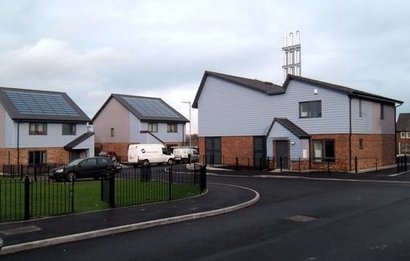
From April 2018, rental properties in England and Wales will be subject to Minimum Energy Efficiency Standards (MEES) which will require properties to have an Energy Performance Certificate (EPC) of at least ‘E’ in order to be rented as residential properties, or renewed to existing tenants. Properties below this rating will be regarded as ‘sub-standard’ and non-compliance with the MEES could lead to civil penalties for landlords.
The introduction of the regulation may trigger the emergence of an energy efficient UK residential mortgage-backed securitisations (RMBS) market, finds the DBRS report, which discusses a range of possible impacts on both the BTL and RMBS markets.
At present, according to estimates by the Department for Business, Energy and Industrial Strategy (BEIS), 20 percent of private sector rentals have an EPC below E1. This in turn means that they will have to modernise in order to conform to the MEES.
As landlords adjust to the regulation by upgrading their properties, the DBRS commentary expects to see an increase in void periods. Though there is partial protection against this from various underwriting policies, providing that landlords hold the additional income to cover for the void periods, the scenario provided by the new Government regulation is not a normal void period. It can be prolonged, and if so, there are greater implications, depending on the extent to which renovation work is required. Therefore, void periods for properties rated below E may be lengthened in 2018 and 2019, as landlords will require time and capital expenditure to upgrade the properties. There may be additional delays caused by landlords needing to find additional funds to pay for the upgrades. If the landlords can’t find these funds, this is likely to result in an inability to rent the affected properties, thus leading to refinance. This in turn may produce a rise in BTL RMBS arrears.
There may also be a heightened refinancing risk for non-green BTL properties, in that if landlords are unable to refinance, due to rate rises being passed through to borrowers, potential forced property sales could have a larger impact on the U.K. housing market.
The most likely response to the regulatory and tax changes on the BTL market is an increase in rental prices charged by landlords as they attempt to recoup their upgrade costs. DBRS is anticipating that a number of smaller single-property or small portfolio landlords will exit the market, due not only to the MEES but also a number of other recently-introduced regulatory and tax reforms. This could result in depressed market prices for inefficient (older) properties, largely as a result of the MEES. Supply of residential properties entering the market may increase as BTL landlords are driven out of the housing market. This might in turn counter the demand pressure that is currently keeping property prices high.
The MEES may also bring energy efficiency to the forefront of considerations for UK BTL RMBS originators and investors, due to the potential credit implication mentioned previously, but also for the opportunities such bonds bring. This might in turn produce an opportunity for issuers to diversify their investor base and achieve more desirable pricing - certain investors are mandated to allocate a minimum portion of their funds to environmentally efficient investments, as well as dedicated green funds.
The Energy efficient Mortgages Action Plan (EeMAP, an EU-funded initiative to create a standardised energy efficient mortgage and ensure financial incentives exist to develop the industry) assumes that improving the energy efficiency of a property will have a positive impact on the credit risk of the mortgage. This arises because of the greater affordability for “green” borrowers resulting from lower energy bills. This may also translate into a lower probability of default for the loan. Furthermore, the increased energy efficiency of the property should increase the property value. As a result, EeMAP suggests that green mortgages should qualify for a preferential capital treatment because of the lower associated credit risk.
Image: Energy efficient housing estate in Castleford, Yorkshire
For additional information:

